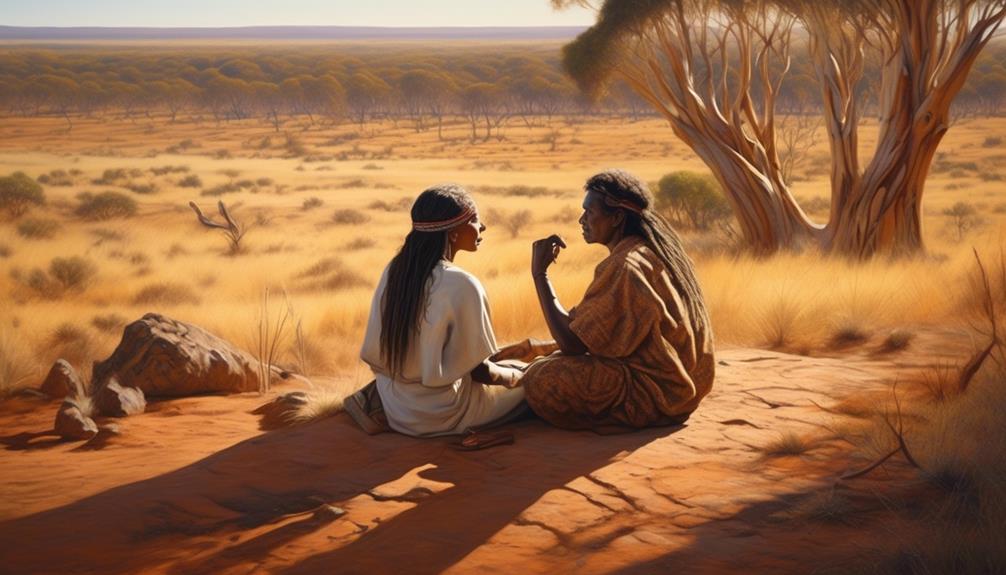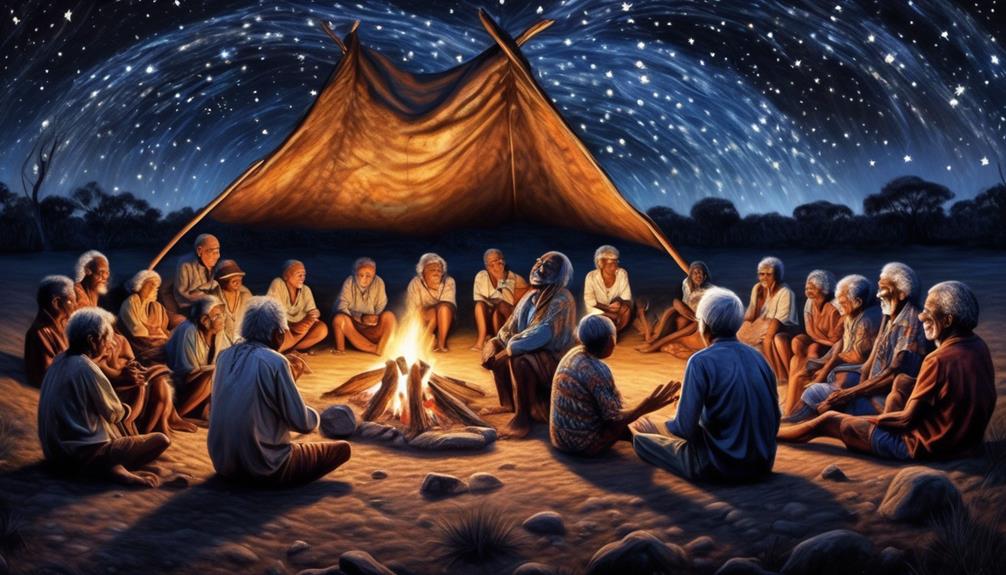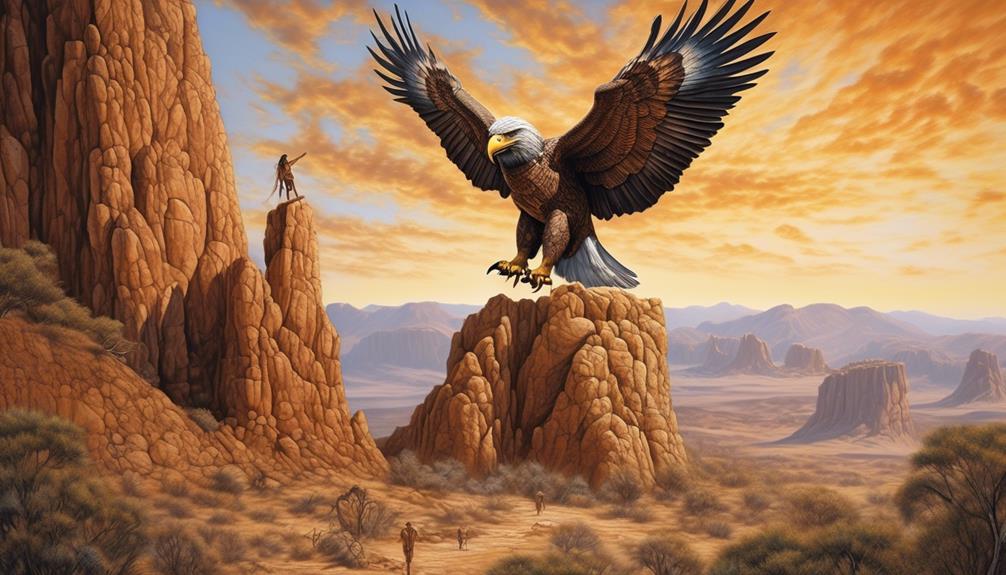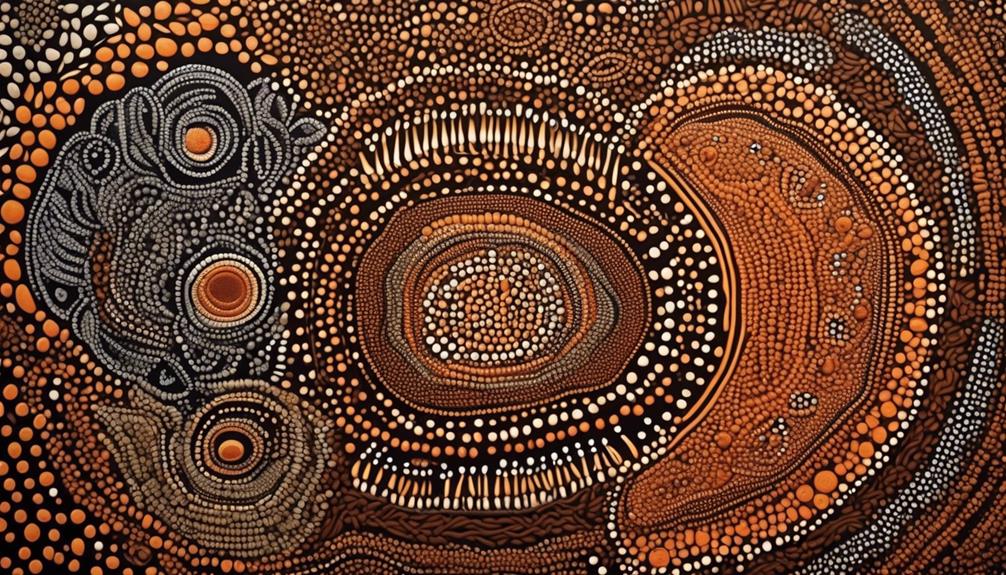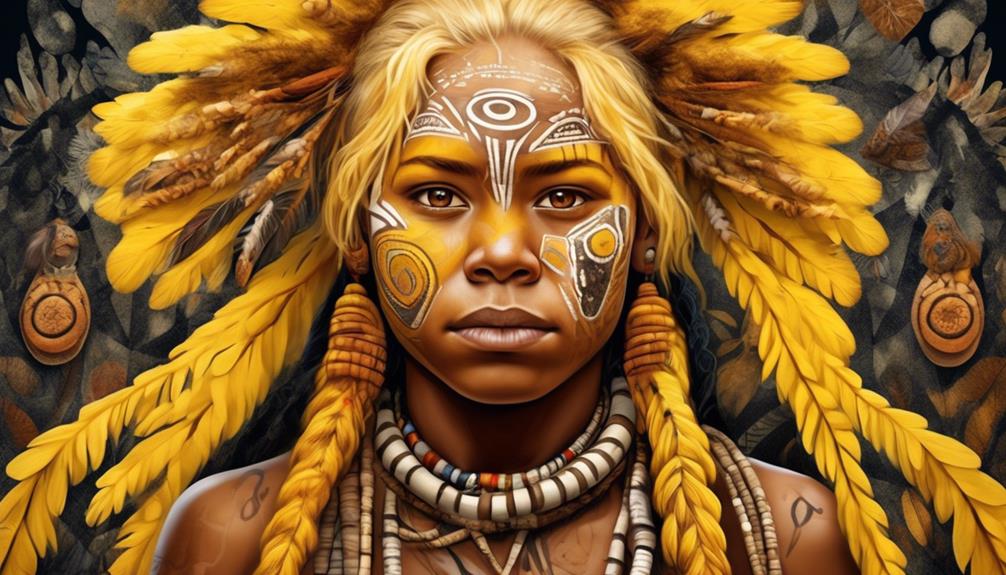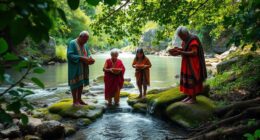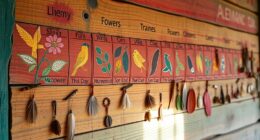As a community, we have come a long way in recognizing the importance of inclusive language. Despite this progress, there is still a lot of work to be done in how we communicate and refer to Aboriginal Australians with respect. Our words and interactions can greatly impact the self-esteem and inclusion of Indigenous communities. It is essential to acknowledge the historical context of language usage in order to communicate in a culturally respectful manner.
However, there are specific guidelines and terminology that can help us navigate these conversations with respect and empathy. Understanding and implementing these practices is crucial for fostering inclusive and meaningful dialogue with Aboriginal Australians.
Key Takeaways
- Use Indigenous terminology to acknowledge distinct cultural identities
- Avoid outdated or offensive terms like 'half-caste' or 'full-blood'
- Seek guidance and listen to preferences of Aboriginal communities
- Choose terms like 'mixed heritage' or 'of Aboriginal and non-Aboriginal descent' when necessary
Historical Context of Language Use
In the past, language use in relation to Aboriginal Australians has been influenced by colonial power dynamics and cultural misunderstandings. The colonial influence on language use has had a profound impact on Aboriginal communities, leading to linguistic oppression and the erosion of traditional languages. Colonial powers imposed their languages on Aboriginal people, often forbidding the use of indigenous languages in schools and other public settings. This not only marginalized Aboriginal languages but also contributed to a loss of cultural identity and heritage.
The imposition of colonial languages resulted in a power imbalance, with the colonizers' languages being elevated above Aboriginal languages. This perpetuated a sense of inferiority among Aboriginal communities and reinforced the notion of cultural superiority held by the colonizers. As a result, many Aboriginal languages suffered a decline, with some even becoming endangered or extinct.
Understanding the historical context of language use is crucial in speaking respectfully about Aboriginal Australians. It allows us to acknowledge the impact of colonialism on linguistic diversity and the ongoing efforts to revitalize and preserve indigenous languages. By recognizing the legacy of linguistic oppression, we can work towards promoting language revitalization and supporting the linguistic rights of Aboriginal communities.
Respectful Terminology and Vocabulary
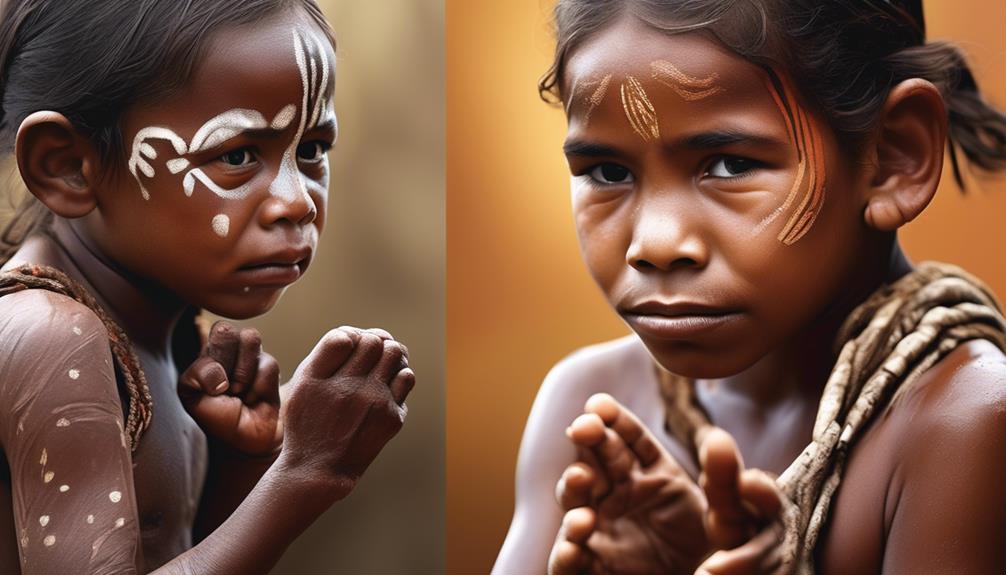
To speak respectfully about Aboriginal Australians, it's important to use terminology and vocabulary that acknowledges their cultural heritage and identity. When discussing Aboriginal Australians, language sensitivity is crucial. Here are some key points to consider:
- Use Indigenous Terminology: It's respectful to use Indigenous terminology when referring to Aboriginal Australians. For example, using the term 'First Nations people' or the specific name of the Aboriginal group, such as Wiradjuri or Yolngu, shows recognition of their distinct cultural identities.
- Avoid Outdated or Offensive Terms: It's essential to avoid using outdated or offensive terms when referring to Aboriginal Australians. Terms such as 'half-caste' or 'full-blood' are derogatory and should never be used. Instead, use terms like 'mixed heritage' or 'of Aboriginal and non-Aboriginal descent' when necessary.
- Seek Guidance and Listen: When in doubt, it's important to seek guidance from Aboriginal communities or individuals and listen to their preferences regarding language use. Respectfully asking for input and being open to learning demonstrates a commitment to using respectful and inclusive language.
Cultural Sensitivity in Communication
Demonstrating cultural sensitivity in communication involves:
- Embracing diverse perspectives and engaging in meaningful dialogue that honors the traditions and values of Aboriginal Australians.
- Cross-cultural communication with Aboriginal Australians requires a deep understanding of their cultural norms, customs, and communication styles.
- It's essential to approach conversations with an open mind, actively listening, and being sensitive to non-verbal cues.
- Cultural awareness is crucial in understanding the historical and sociopolitical factors that have shaped the Aboriginal community's communication patterns.
In cross-cultural communication, it's important to:
- Use language that respects the unique cultural identity of Aboriginal Australians.
- Refrain from making assumptions and be mindful of the impact of our words.
- Seek clarification when necessary.
- Recognize and acknowledge the diversity within the Aboriginal community.
- Approach interactions with humility and a willingness to learn from the experiences and insights of Aboriginal Australians.
Impact of Language on Indigenous Identity
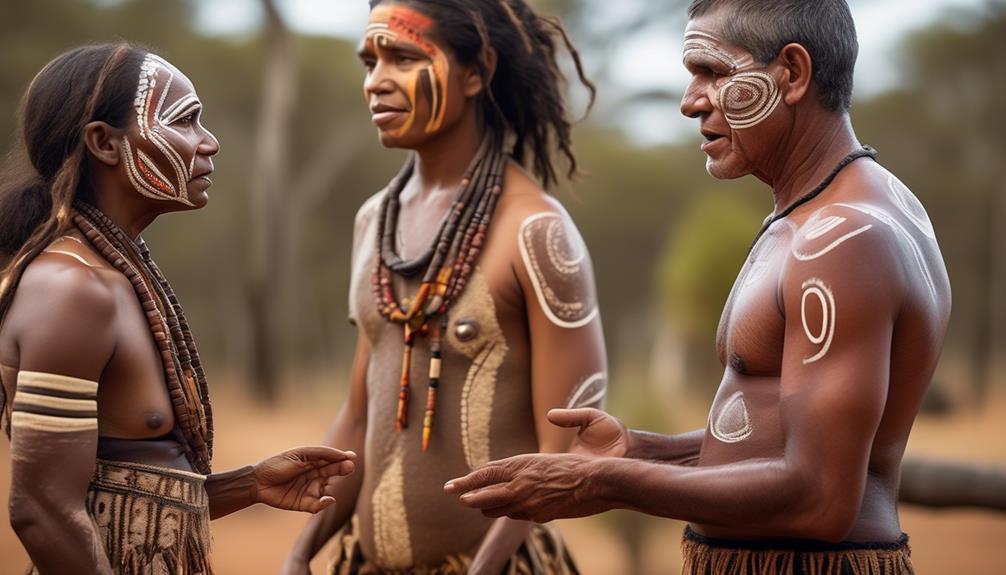
Understanding the profound significance of language in shaping the Indigenous identity underscores the importance of acknowledging its intrinsic connection to cultural heritage and community values. Language influence is pivotal in shaping how Indigenous people perceive themselves and how they're perceived by others. It impacts the representation of Indigenous culture, history, and contemporary issues. Here are three key points to consider:
- Preservation of Tradition: Language is intertwined with traditions and oral histories, serving as a vessel for passing down knowledge from one generation to the next. When Indigenous languages are marginalized or lost, a significant part of cultural identity and heritage is at risk of being eroded.
- Empowerment and Autonomy: The use of language plays a vital role in fostering a sense of empowerment and autonomy within Indigenous communities. When Indigenous languages are valued and supported, it contributes to a stronger sense of identity and self-worth among Indigenous individuals.
- Challenging Stereotypes: Language can challenge stereotypes and misconceptions by providing a more accurate representation of Indigenous perspectives and lived experiences. It can help to dismantle harmful narratives and promote a more nuanced understanding of Indigenous cultures and histories.
Guidelines for Inclusive and Respectful Conversations
In our conversations, it is essential to prioritize inclusivity and respect by actively listening and valuing the perspectives of Aboriginal Australians. Open dialogue and mutual understanding are crucial for fostering respectful conversations. When engaging in discussions about Aboriginal Australians, it is important to approach the conversation with humility and a willingness to learn. Here are some guidelines for inclusive and respectful conversations:
| Dos | Don'ts |
|---|---|
| Approach with an open mind | Make assumptions |
| Listen actively | Interrupt or dominate the conversation |
| Acknowledge diverse perspectives | Disregard or dismiss experiences |
Frequently Asked Questions
What Are Some Common Misconceptions About Aboriginal Australians That People Should Be Aware of When Speaking Respectfully?
Common stereotypes about Aboriginal Australians include being primitive or lazy, which are harmful misconceptions.
It's crucial to approach respectful communication with cultural sensitivity, educating others about the diverse and rich history of Aboriginal Australians.
By dispelling these misconceptions, we can foster understanding and respect.
It's important to acknowledge the resilience and contributions of Aboriginal Australians to our society, and to use language that reflects this.
How Can Non-Indigenous Australians Actively Support and Promote the Use of Respectful Language and Terminology in Their Communities?
We can actively support and promote respectful language by advocating for language education and cultural sensitivity.
By embracing and respecting the indigenous communities, we can create a more inclusive environment.
We must actively engage in conversations and educate others on the importance of respectful communication.
It's crucial to understand the impact of our words and actions on the indigenous population and strive to promote a more respectful and inclusive society.
What Are Some Specific Examples of Language or Phrases That Should Be Avoided When Speaking About Aboriginal Australians?
Specific examples of harmful phrases to avoid when speaking about Aboriginal Australians include using outdated and derogatory terms like 'half-caste' or 'full-blooded.'
It's crucial to use respectful language that acknowledges the cultural diversity and richness of Aboriginal communities.
By increasing cultural awareness, we can actively promote inclusive and respectful communication.
It's important to be mindful of the impact of our words and strive to foster a more inclusive and respectful society.
What Are Some Ways to Actively Listen and Learn From Aboriginal Australians When Engaging in Conversations About Their Culture and Experiences?
We actively listen and learn from Aboriginal Australians by engaging in meaningful conversations about their culture and experiences. This involves showing genuine interest, asking open-ended questions, and respecting their perspectives.
Cultural understanding is crucial, and we can achieve this by seeking out educational resources, attending cultural events, and being open to new knowledge.
It's essential to approach these conversations with humility and a willingness to learn from the rich heritage and wisdom of Aboriginal Australians.
How Can Individuals Address and Correct Others When They Use Inappropriate or Disrespectful Language in Conversations About Aboriginal Australians?
When addressing misconceptions and correcting language use, we can foster understanding by respectfully pointing out inaccuracies and offering correct information.
By calmly and compassionately addressing inappropriate language, we can create a positive learning opportunity for everyone involved.
It's important to approach these conversations with empathy and patience, acknowledging that we all have room for growth and understanding.
This approach can help promote respectful and inclusive dialogue.
Conclusion
In conclusion, it's crucial to use language that honors the rich history and culture of Aboriginal Australians. By speaking respectfully and using inclusive terminology, we can create a more harmonious and understanding society.
Just as a diverse tapestry is made up of different threads, our words and actions contribute to the vibrant mosaic of Indigenous identity.
Let's continue to strive for thoughtful and considerate communication that uplifts and celebrates the voices of Australia's First Nations people.
